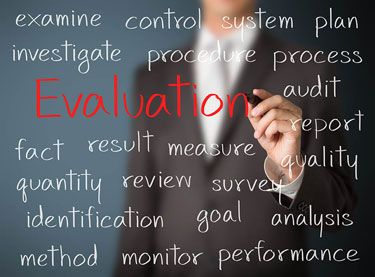7 Tips for Successful HR System Evaluations
An HRIS professional shares his secrets for making smart software selections.

 Most HR professionals have evaluated HR software at some point in their careers. However, as delivery models change to focus more on software-as-a-service (SAAS), HR professionals may need to adjust the processes they’ve used in the past. The following steps can guide you.
Most HR professionals have evaluated HR software at some point in their careers. However, as delivery models change to focus more on software-as-a-service (SAAS), HR professionals may need to adjust the processes they’ve used in the past. The following steps can guide you.
1. Have a Strategy and a Plan
If your company does not have a valid strategy for how all components of its technology infrastructure will fit together, it will make no difference what software is chosen; odds are that it will not perform adequately. That’s why it’s important to develop a human capital management strategy at the outset.
The first step is to conduct discovery, which differs from the discovery conducted during system evaluation. This discovery is focused more on what you want a system to do rather than how it should function. Remember, your human capital management strategy should be designed to assist every area of your organization—not just HR—so it’s critical to conduct discovery sessions that include both HR and key top executives, as well as non-HR stakeholders.
You’ll need to understand the current technology being used and the terms of each contract. Conduct working sessions where you analyze the system you already have in place to see if it can meet the company’s business needs, now and in the future.
From all these pieces, create a road map that includes a timeline for technology acquisitions by year and quarter. Don’t get too granular—stay focused on the big picture. Be sure to vet the strategy with all those who were included in the discovery process.
Once everyone buys into the strategy, present it to senior management. Keep the presentation at the 50,000-foot level and discuss the consensus-building process. If there are multiple options, briefly discuss each one, but focus on the one you most recommend. Depending on the company, a high-level cost analysis may be needed.
Recommended:
- Designate a team to develop a human capital management strategy if your organization does not have such a strategy.
- Keep your focus broad when communicating with top management.
- Stay away from voluminous text documents.Use collaborative software to develop your strategy instead of sending documents through e-mail.
2. Use the Right Resources
Assembling the right team is vital. There should be a core team, an extended team and a demo team. Some individuals will be on all three. The hardest part may be getting the time commitment from participants.
Core team members are those who will be involved with the entire process, including making the final purchase recommendation to management. This team should represent all areas within the company impacted by the new system.
The extended team includes the core team plus folks from disciplines within the company who will be impacted by the new system. Members will be individuals from functional HR areas as well as staff who work in stakeholder or front-line positions. Being inclusive can increase system adoption after implementation.
The demo team is everyone in the extended team as well as any subject matter experts from various areas who will be affected by the new system. These experts typically attend only the portions of the demos that will affect them the most.
If budget allows, consider using external resources as well. Consultants are most effective during these phases: strategy development, discovery, vendor list creation, matching requirements to vendors and conducting demos. Used effectively, they can save a lot of research time, as they usually have extensive knowledge of both the vendor landscape and templates to move the process forward.
Recommended:
- Include stakeholders, knowing that most systems will also be used by non-HR staff.
- Use a temp service to backfill some of the positions held by those who will be needed to work nearly full time on the evaluation.
- Use a consultant for the areas where assistance is needed most.
3. Have Good Requirements
Focus on any significant or unique process that needs to be accommodated in the new system. Interviews—lasting a minimum of one hour—should be done with leaders of each functional area impacted by the system to gather facts. Next, create a requirements document. Requirements should be brief and understandable, and each one should be given a priority. It is best to keep priorities simple and minimal, and consensus should rule.
Also consider global requirements. Even if a company is not currently operating internationally, the requirements should evaluate whether a function can be scaled globally to address future corporate changes.
Recommended:
- Focus on processes in your organization that are unique and not those that can be met by all vendors.
- Use collaboration software to create system requirements.
- Keep priorities to a minimum, and don’t overcomplicate things.
4. Focus on Leading-Edge Technology
Focus on technologies that best fit your corporate culture. If you are considering a mobile version of your technology, make sure everyone understands how it will work. Is it a true app or just a duplication of the screen on a mobile device? Many features that work on a big screen can be cumbersome on a smartphone.
Also understand which browsers the target system will support and the actual user experience under each one. Not understanding this information upfront can lead to spotty adoption.
Recommended:
- Understand which newer technologies the system will support.
- Find out if mobile features are supported via an app.
- Know which browser versions are supported.
5. Use Decision Drivers
You do not want to make your decision based only on the vendor’s demo. There are many different decision drivers, but usually they include one or more of these considerations:
Once you choose three to five key decision drivers, prioritize them. Usually functionality and usability are at the top of the list, and they are sometimes combined.
When evaluating any technology, always come back to the decision drivers to see how each vendor ranks within each driver. Doing so will make the decision process more thorough and objective.
Recommended:
- Base your organization’s fina:l vendor decision on the decision drivers. Don’t rely on impressions from the demo.
6. Assess How Vendors
Fit Your Requirements
Once requirements are developed, you’ll need a method to identify which vendors can meet them. Only those vendors should be invited to demo. Historically, this is where you would issue an RFP (request for proposal) with hundreds of questions for the vendor. Some companies still require RFPs; always check internally with your organization’s purchasing, IT or legal staff to find out whether any specific process is required.
Keep RFPs as short as possible. The longer the document, the more likely it is that a vendor won’t respond. Give a vendor two to three weeks to reply. The final list of vendors you ask to conduct demos should be limited to three.
Recommended:
- Create a brief RFP focusing on unique processing needs. Some SAAS vendors may not reply to an RFP but instead will send you their standard product questions with their answers.
- Request high-level system cost. Do not expect specific numbers on interfaces or implementation at this time.
- Score vendor responses using a weighted numeric scale.
7. Control the Demo and Narrow Selection
By the time you reach this step, each of the vendors you’ve asked to conduct a demo should be a good fit for your business. The question is: Which is the best fit?
All vendors like to show off the components of their system that they feel will outshine the competition. However, during the demo your team needs to see comparable features and functionality to make a valid decision. To do this, have a scripted demo for all vendors to follow.
The script should be divided into functionality sections with an agenda that has start and stop times for each function so that the appropriate subject matter experts can attend specific parts of the demo. Information covered in each section can address a single question from the RFP or a combination of questions. Ideally, each question should be allocated three to four minutes.
After the demo, score each vendor and calculate a weighted average for each question and functional area.
Using the score from the demo and a ranking of how each vendor best matches the decision drivers, your team should select one vendor as well as an alternate in case a contract cannot be agreed upon with the vendor of choice.
Recommended:
- Don’t expect a vendor to customize the demo to meet company-specific criteria, but do assess what tasks can be done.
- Schedule each vendor demo to last four to seven hours, depending on the features being evaluated.
- Schedule focused follow-up Web demos to dive deeper into a specific area.
- Plan demos back-to-back and with the same team members to ensure consistency.
Keep Goals in Mind
Be sure to allow ample time for the entire process. Usually, it takes around 12 weeks. Investing in technology is an important and costly decision and should not be hurried.
Conducting a successful system evaluation is not an exact science, but you can make it a more objective one. Keeping an eye on the ultimate business goal can eliminate some of the anxiety surrounding this process. Good luck!
John A. Hinojos, HRIP, is vice president of consulting services for HRchitect Inc. He has been involved with HR and HR systems for more than 30 years. He is also a frequent presenter on system fundamentals, system evaluation and global systems. He can be reached at JHinojos@HRchitect.com.
©2014. International Association for Human Resource Information Management. Used with permission.
Advertisement
An organization run by AI is not a futuristic concept. Such technology is already a part of many workplaces and will continue to shape the labor market and HR. Here's how employers and employees can successfully manage generative AI and other AI-powered systems.
Advertisement


